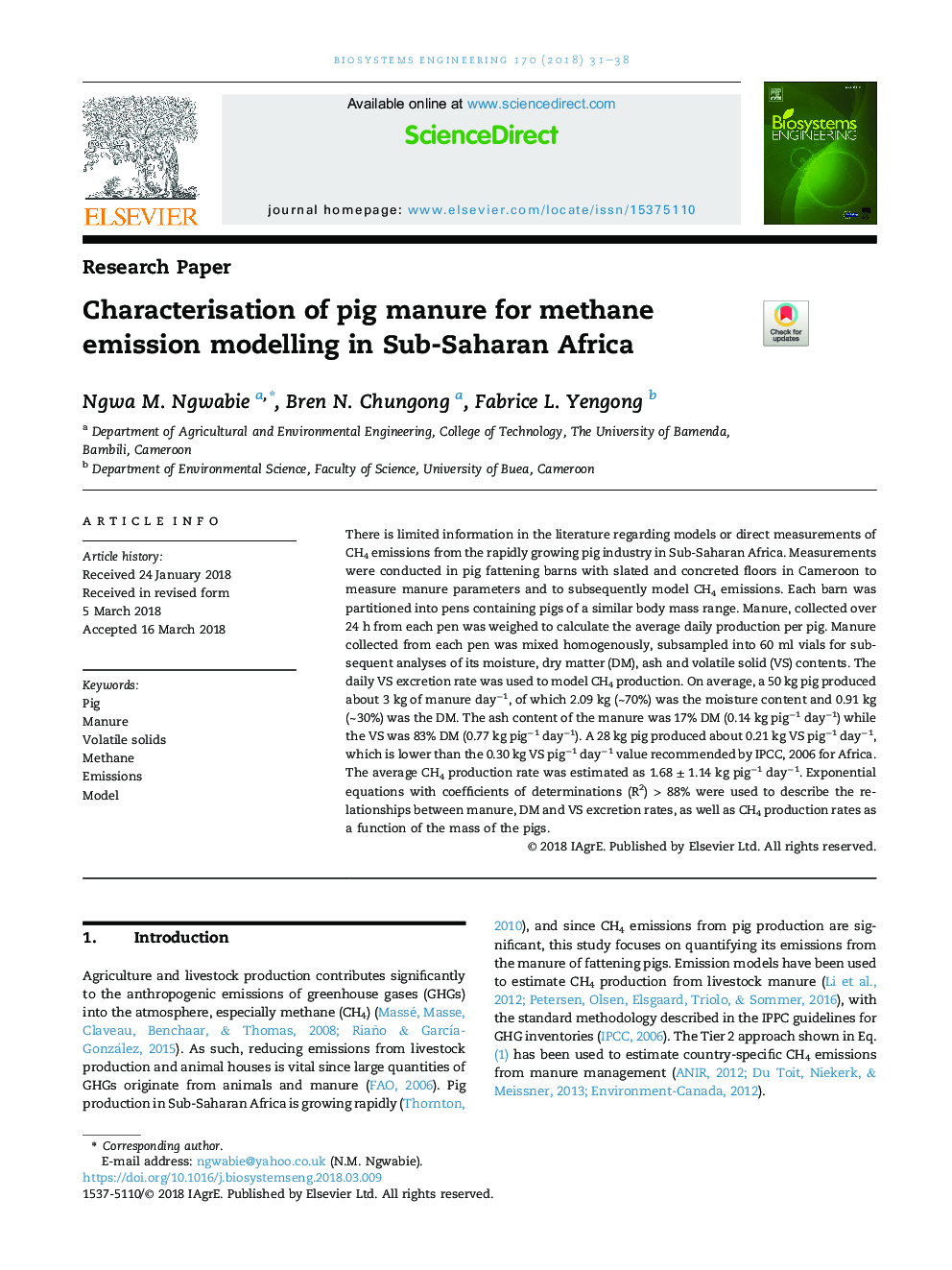| Article ID | Journal | Published Year | Pages | File Type |
|---|---|---|---|---|
| 8054700 | Biosystems Engineering | 2018 | 8 Pages |
Abstract
There is limited information in the literature regarding models or direct measurements of CH4 emissions from the rapidly growing pig industry in Sub-Saharan Africa. Measurements were conducted in pig fattening barns with slated and concreted floors in Cameroon to measure manure parameters and to subsequently model CH4 emissions. Each barn was partitioned into pens containing pigs of a similar body mass range. Manure, collected over 24 h from each pen was weighed to calculate the average daily production per pig. Manure collected from each pen was mixed homogenously, subsampled into 60 ml vials for subsequent analyses of its moisture, dry matter (DM), ash and volatile solid (VS) contents. The daily VS excretion rate was used to model CH4 production. On average, a 50 kg pig produced about 3 kg of manure dayâ1, of which 2.09 kg (â¼70%) was the moisture content and 0.91 kg (â¼30%) was the DM. The ash content of the manure was 17% DM (0.14 kg pigâ1 dayâ1) while the VS was 83% DM (0.77 kg pigâ1 dayâ1). A 28 kg pig produced about 0.21 kg VS pigâ1 dayâ1, which is lower than the 0.30 kg VS pigâ1 dayâ1 value recommended by IPCC, 2006 for Africa. The average CH4 production rate was estimated as 1.68 ± 1.14 kg pigâ1 dayâ1. Exponential equations with coefficients of determinations (R2) > 88% were used to describe the relationships between manure, DM and VS excretion rates, as well as CH4 production rates as a function of the mass of the pigs.
Related Topics
Physical Sciences and Engineering
Engineering
Control and Systems Engineering
Authors
Ngwa M. Ngwabie, Bren N. Chungong, Fabrice L. Yengong,
